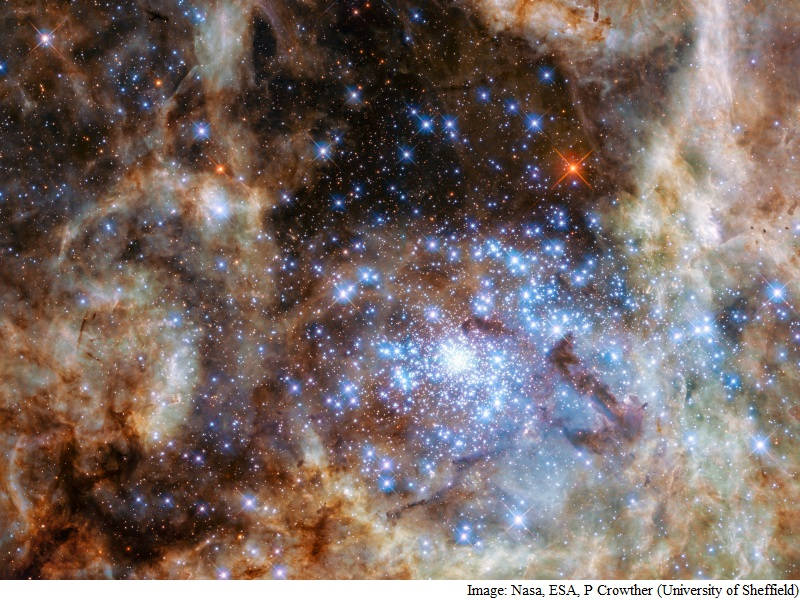An international team of astronomers has identified nine monster stars in the star cluster R136 with the aid of the Hubble Space Telescope.
The cluster R136 is about 170,000 light-years away from the earth and is located in the Tarantula Nebula, within the Large Magellanic Cloud.
According to a report from NASA, the young cluster hosts many extremely massive, hot and luminous stars whose energy is mostly radiated as ultraviolet rays.
Apart from being extremely massive, the stars are also extremely bright. Together they outshine the Earth’s Sun 30 million times.
The astronomers also studied the outflows of these nine stars and discovered that they eject masses as heavy as the Earth every month at a speed approaching one percent of the speed of light.
This results in extreme weight loss throughout their brief lives, the astronomers reasoned.
The discovery makes it the largest sample of very massive stars to be identified to date. However, the origin of the stars remains unclear.
“There have been suggestions that these monsters result from the merger of less extreme stars in close binary systems,” Saida Caballero-Nieves, a co-author of the study, explained.
“From what we know about the frequency of massive mergers, this scenario can’t account for all the really massive stars that we see in R136, so it would appear that such stars can originate from the star formation process,” Caballero-Nieves added.
The new find could bring new findings about how huge stars develop. The scientists also said that it was a worthwhile demonstration of the powers of the Hubble Space Telescope, which is ageing and is less powerful than new telescopes that are to be launched in coming years.
“The ability to distinguish ultraviolet light from such an exceptionally crowded region into its component parts, resolving the signatures of individual stars, was only made possible with the instruments aboard Hubble,” Paul Crowther, lead author of the study said.



